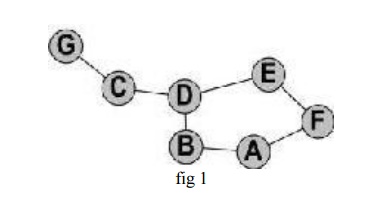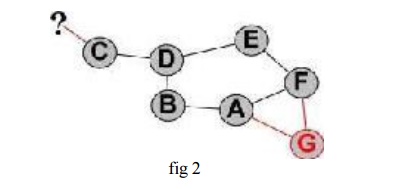Chapter: Mobile Networks : Routing
Destination Sequenced Distance Vector (DSDV): Algorithm, Illustration, Advantages, Disadvantages
DESTINATION SEQUENCED DISTANCE VECTOR (DSDV)
DSDV was
one of the first proactive routing protocols available for Ad Hoc networks. It
was developed by C. Perkins in 1994, 5 years before the informational RFC of
the MANET group. It has not been standardised by any regulation authorities but
is still a reference.
Algorithm
DSDV is
based on the Bellman-Ford algorithm.
With
DSDV, each routing table will contain all available destinations, with the
associated next hop, the associated metric (numbers of hops), and a sequence
number originated by the destination node.
Tables
are updated in the topology per exchange between nodes.
Each node
will broadcast to its neighbors entries in its table. This exchange of entries
can be made by dumping the whole routing table, or by performing an incremental
update, that means exchanging just recently updated routes.
Nodes who
receive this data can then update their tables if they received a better route,
or a new one.
Updates
are performed on a regular basis, and are instantly scheduled if a new event is
detected in the topology.
If there
are frequent changes in topology, full table exchange will be preferred whereas
in a stable topology, incremental updates will cause less traffic.
The route
selection is performed on the metric and sequence number criteria. The sequence
number is a time indication sent by the destination node. It allows the table
update process, as if two identical routes are known, the one with the best
sequence number is kept and used, while the other is destroyed (considered as a
stale entry).
Illustration
Let us
consider the two following topologies (figure 1 and figure 2). At t=0, the
network is organized as shows figure 1. We suppose at this time the network is
stable, each node has a correct routing table of all destinations.

Then, we
suppose G is moving, and at t+1, the topology is as shown in figure 2.

At this
stage, the following events are detected, and actions are taken:
On node C: Link with G is broken, the route
entry is deleted, and updates are sent to node D.
On node A and F: A new link is detected, the
new entry is added to the routing table and updates are sent to neighbors.
On node
G: Two new links are detected (to A and F), and one is broken (to C), the
routing table is updated and a full dump is sent to neighbors (as the routing
table is entirely changed, a full dump equals an incremental update).
Advantages
DSDV was
one of the early algorithms available. It is quite suitable for creating ad hoc
networks
with small number of nodes. Since no formal specification of this algorithm is
present there is no commercial implementation of this algorithm.
DSDV
guarantees for loop free path.
Disadvantages
DSDV
requires a regular update of its routing tables, which uses up battery power
and a
small amount of bandwidth even when the network is idle.
Whenever the topology of the network changes, a new
sequence number is necessary before the network re-converges; thus, DSDV is not
suitable for highly dynamic networks.
Related Topics